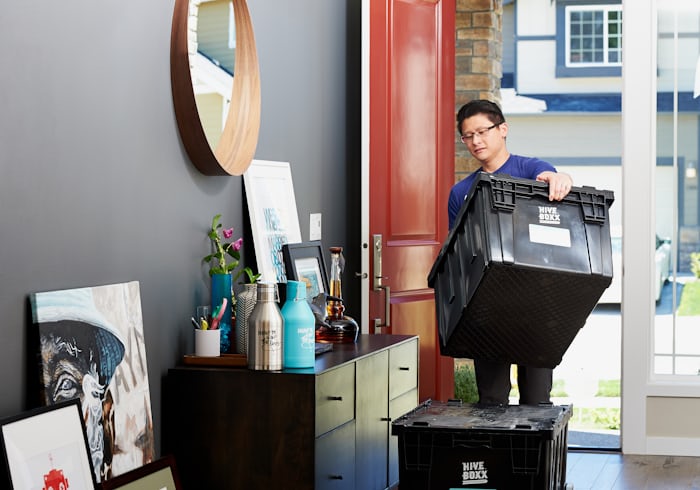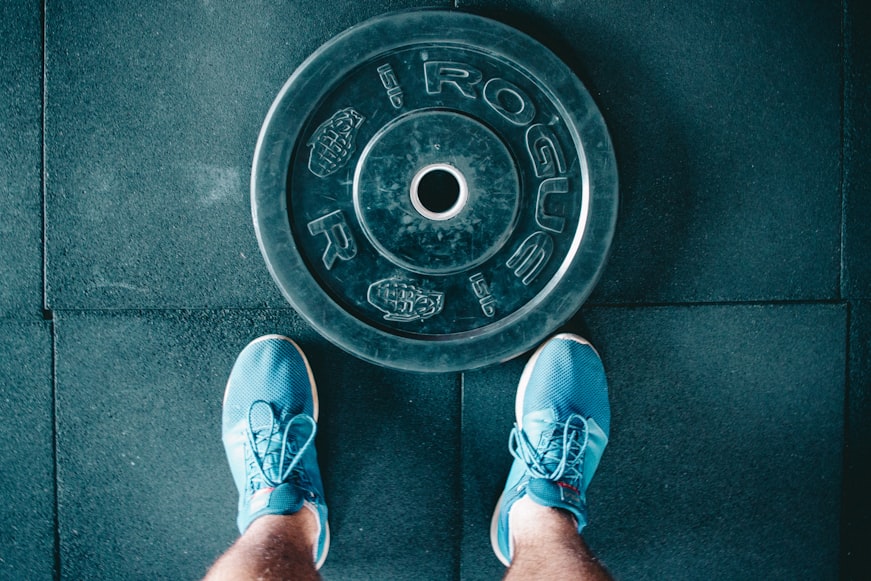If you’ve accidentally lifted after hernia surgery, you’re not alone. This common concern affects many people during their recovery period, often happening during routine activities like picking up a grocery bag or lifting a small child without thinking. While this moment can cause immediate anxiety, understanding what to do next is crucial for your recovery. Hernia surgery is one of the most common surgical procedures, with over 1 million performed annually in Kenya, & about 20 million worldwide. The success of your recovery largely depends on following post-operative guidelines, particularly regarding lifting restrictions.

Table of Contents
These restrictions aren’t just precautionary – they’re essential for allowing proper tissue healing and preventing complications.In this article, we’ll explore what you need to know if you’ve lifted something too heavy after hernia surgery, including immediate steps to take, potential risks, and how to ensure your recovery stays on track. We’ll also provide evidence-based guidance on when to contact your healthcare provider and strategies to prevent future lifting incidents.
This article is based on current medical guidelines and expert recommendations for post-hernia surgery care. However, always follow your surgeon’s specific instructions, as individual recovery needs may vary.
Understanding Post-Hernia Surgery Lifting Restrictions
After hernia surgery, your surgeon will provide specific lifting restrictions as a crucial part of your recovery plan. These aren’t arbitrary rules – they’re based on extensive medical research and understanding of how the body heals after surgery.
Why Are Lifting Restrictions So Important?
During hernia surgery, your surgeon repairs weakened or torn tissue, often using surgical mesh to strengthen the repair. This newly repaired tissue needs time to heal properly and form strong scar tissue. When you lift heavy objects, it creates increased pressure in your abdomen, which can stress the surgical site before it’s fully healed.
What Are the Typical Restrictions?
Most surgeons recommend:- No lifting more than 10 pounds (about the weight of a gallon of milk) for the first 4-6 weeks- Gradually increasing weight limits after your follow-up appointment- Complete avoidance of heavy lifting for 8-12 weeks, depending on your surgery type

What Counts as “Lifting”?
Many daily activities involve lifting that you might not immediately consider:
- Carrying groceries.
- Picking up children.
- Moving laundry baskets.
- Pulling heavy doors.
- Getting items from high shelves.
- Moving furniture or household items.
The Science Behind the Restrictions
When you lift something heavy:
- Your abdominal pressure increases significantly.
- Your muscles contract forcefully.
- Strain is placed directly on the surgical repair site.
- The risk of disrupting healing tissue increases
Impact on Healing
Proper adherence to lifting restrictions allows:
- Adequate healing of surgical mesh integration.
- Proper tissue reinforcement.
- Reduced risk of hernia recurrence
Remember: Following these restrictions now can prevent months of additional recovery time later. While the limitations may feel frustrating, they’re temporary and essential for your long-term health.
When to Ask for Help
It’s important to:
- Plan ahead for tasks that might require lifting.
- Ask family members or friends for assistance.
- Use delivery services when possible.
- Keep frequently needed items at waist level.
- Consider temporary modifications to your home or workspace.
The most successful recoveries typically come from patients who strictly follow lifting restrictions, even when they’re feeling better. Your surgical site needs the full recommended healing time, regardless of how strong you may feel.
Immediate Steps If You’ve Lifted Something Too Heavy
If you’ve accidentally lifted after hernia surgery, staying calm and taking appropriate action is crucial. Many patients who have accidentally lifted after hernia surgery experience immediate anxiety, but knowing the right steps to take can help manage the situation effectively.

Immediate Actions to Take
After you’ve accidentally lifted after hernia surgery, follow these steps:
1. Stop Activity Immediately
- Put down any weight you’re carrying.
- Slowly move to a comfortable sitting or lying position.
- Avoid sudden movements that might increase strain.
2. Assess Your Symptoms
Watch for:
- Sharp or sudden pain at the surgical site.
- Bulging or protrusion in the area.
- Redness or warmth around the incision.
- Unusual discomfort or pressure.
- Changes in the appearance of the surgical site.
3. When to Contact Your Healthcare Provider
Call your surgeon if you experience:
- Persistent pain lasting more than an hour.
- Any noticeable bulging or protrusion.
- Increased tenderness around the surgical site.
- Fever above 101°F (38.3°C).
- Nausea or vomiting.
- Severe abdominal pain.
Emergency Warning Signs
Seek immediate medical care if you notice:
- Severe, unrelenting pain.
- Significant swelling or bulging.
- Difficulty breathing.
- Signs of infection (increased redness, warmth, drainage).
- Fever with chills- Severe nausea or vomiting.
Minimizing Potential Damage
After accidentally lifting after hernia surgery, you can:
- Rest in a comfortable position.
- Avoid additional strain or lifting.
- Take prescribed pain medication as directed.
- Keep your scheduled follow-up appointments
Recovery Steps

1. Rest Period
- Take it easy for the next 24-48 hours.
- Avoid unnecessary movement.
- Sleep in a supported position.
- Follow your surgeon’s original recovery guidelines.
2. Documentation
Keep track of:
- When the lifting incident occurred.
- What you were lifting.
- Any symptoms that develop.
- Your pain levels.
- Any changes you notice
Potential Complications from Early Lifting
When you’ve accidentally lifted after hernia surgery, understanding potential complications can help you recognize warning signs and seek appropriate care. Many patients who have accidentally lifted after hernia surgery worry about possible consequences, and these concerns are valid.
Risk of Repair Failure and Reherniation
The most significant concern after accidentally lifted after hernia surgery includes:
- Disruption of surgical repair.
- Separation of newly joined tissues.
- Displacement of surgical mesh.
- Recurrence of the original hernia.
- Development of a new hernia at the surgical site.
Early lifting can affect the healing process by:
- Interrupting tissue regeneration.
- Straining surgical sutures.
- Compromising mesh integration.
- Causing internal inflammation.
- Delaying the formation of strong scar tissue

Common Signs of Complications
Immediate Signs:
- Sharp, sudden pain.
- Pulling sensation at the surgical site.
- Visible bulging or protrusion.
- Immediate discomfort during lifting.
Delayed Signs:
- Persistent soreness.
- Gradual swelling.
- Increased tenderness.
- Changes in the surgical site appearance.
- Difficulty with normal movements.
Long-term Implications
Potential long-term effects include:
- Extended recovery time.
- Need for additional surgery.
- Increased risk of future hernias.
- Chronic pain or discomfort.
- Reduced tissue strength.
- Additional restrictions may be necessary.
- More frequent follow-up visits might be required.
Risk Factors for Complications
Some factors that may increase complication risks:
- Size and type of original hernia.
- Surgery technique used.
- Overall health status.
- Age and fitness level.
- Previous surgical history.
Remember: While complications can occur after accidentally lifting post-surgery, many patients recover well with proper medical attention and careful adherence to recovery guidelines. Always communicate openly with your healthcare team about any concerns.

Prevention and Safe Movement Strategies
If you’ve accidentally lifted after hernia surgery, implementing proper prevention strategies becomes even more crucial. Many patients who have accidentally lifted after hernia surgery can benefit from these safe movement techniques to prevent future incidents.
Safe Movement Techniques
- Keep your back straight.
- Bend at the knees, not the waist.
- Hold items close to your body.
- Avoid twisting movements.
- Use your legs for support.
Helpful Tools for Daily Tasks
- Reacher/grabber tools.
- Rolling carts.
- Support pillows.
- Raised toilet seats.
- Step stools with handles
Planning Ahead
- Rearrange frequently used items to waist level.
- Use delivery services.
- Accept help from family and friends.
- Break large tasks into smaller ones.
- Schedule activities when help is available
Recovery and Moving Forward
After you’ve accidentally lifted after hernia surgery, focusing on proper recovery becomes essential. Understanding how to move forward can help prevent future complications and ensure successful healing.
Getting Back on Track
- Resume your original recovery plan.
- Follow your surgeon’s updated instructions.
- Monitor your surgical site carefully.
- Keep a symptom diary.
- Attend all follow-up appointments.
Safe Return to Activities
- Start with gentle walking.
- Gradually increase activity levels.
- Follow your surgeon’s timeline.
- Listen to your body’s signals.
- Avoid rushing the process.

Long-term Success Tips
- Maintain a healthy weight.
- Practice good posture.
- Strengthen core muscles (when approved).
- Use proper lifting techniques.
- Continue using assistive devices as needed.
Remember: Recovery after accidentally lifting post-hernia surgery may require extra patience and attention to proper movement techniques. Always consult your healthcare provider before resuming normal activities.
- Building Better Habits
- Plan daily activities carefully.
- Create a support system.
- Modify your environment.
- Learn proper body mechanics.
- Stay committed to recovery guidelines.
Note: Individual recovery experiences may vary. Follow your healthcare provider’s specific instructions for your situation.
Follow On:
